Manitoba Insect & Disease Update
Issue 4: June 20, 2018
Summary
Diseases: Bacterial blight has been reported in many oat fields in south-central and south-eastern Manitoba. Environmental stress symptoms have also been reported in oats. Fungicide applications in spring wheat and canola are being considered and weighed against the current environmental and microclimatic conditions.
Insects: Early-season concerns, such as flea beetles on canola and cutworms are coming to an end. Most of our potential insect pests of mid-season have not been detected at high levels yet.
Foliar Disease in Oats
There have been multiple reports of foliar disease in oats showing up in central and southeastern Manitoba this past week. In almost all cases the symptoms are due to bacterial blight. The symptoms are typically only present in the lower canopy and showed up last week after moisture events and slightly cooler temperatures. This disease is not favoured by hot, dry weather, so all new growth in these plants is unaffected. The images below show the range of bacterial blight symptoms we are seeing this year. For the most part, affected areas appear necrotic and move in from the leaf margins. Bacterial blight cannot be controlled by a fungicide application and is typically not a yield limiting issue as crops tend to outgrow the damage and the upper leaves are rarely affected.
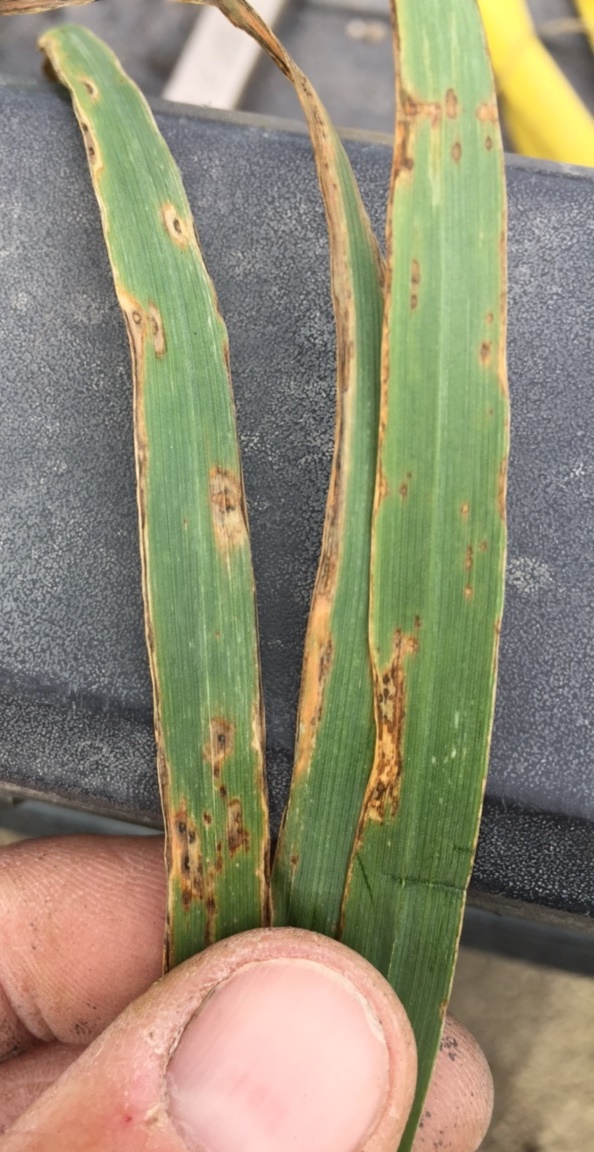
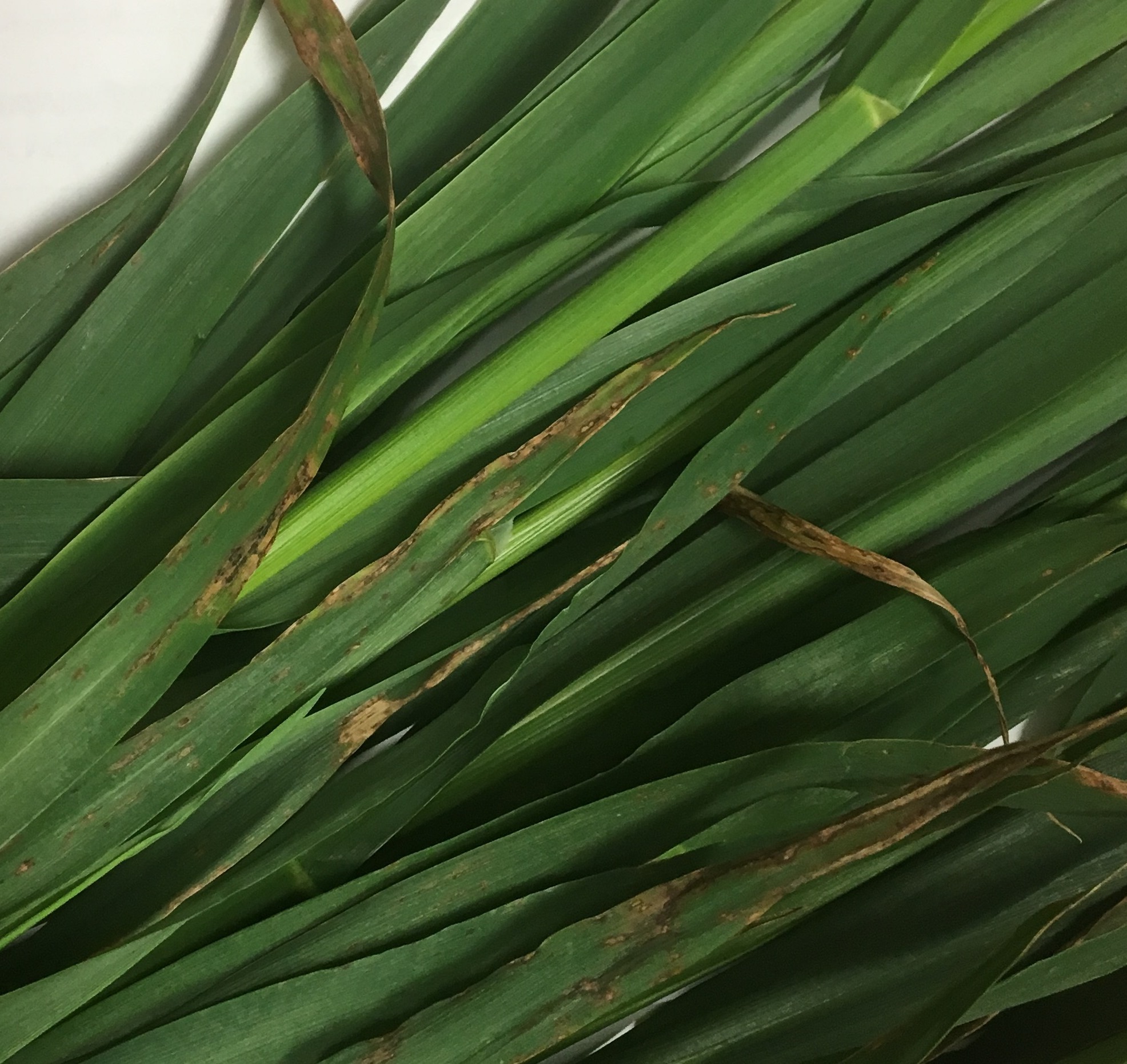

Figure 1. Variable symptoms of bacterial blight in oats. (Image on left courtesy of Jason Voogt, Field 2 Field Agronomy)
There have also been oat samples submitted showing environmental damage in the form of leaf tip scorching. Rapid growth and hot, dry environmental conditions can cause these symptoms especially when accompanied by other stress events, such as minor hail. These issues are not caused by a disease, and therefore, cannot be managed with a fungicide.
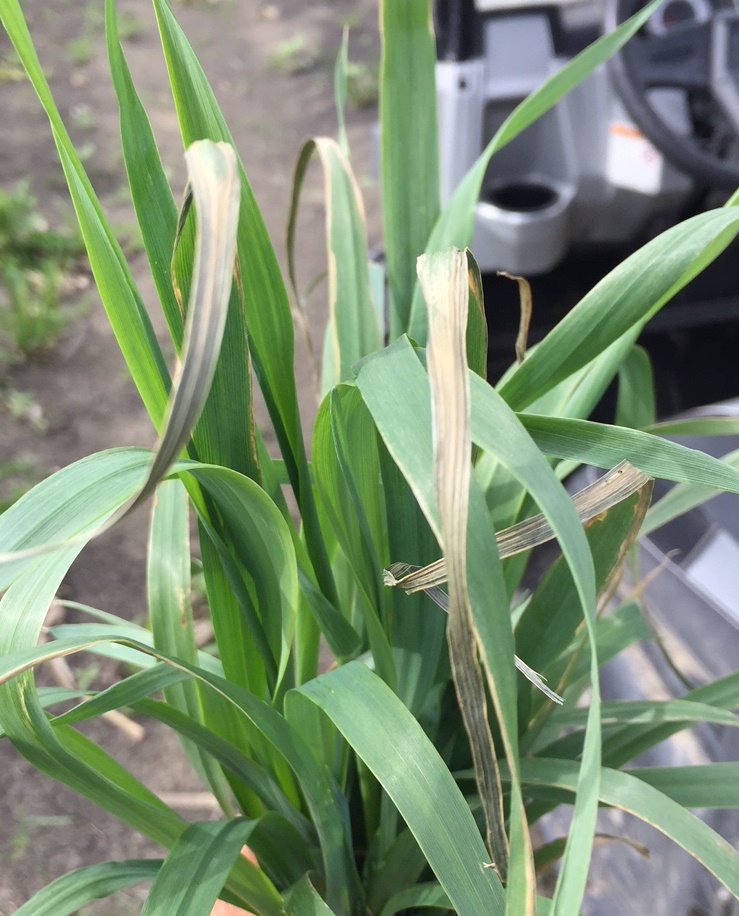
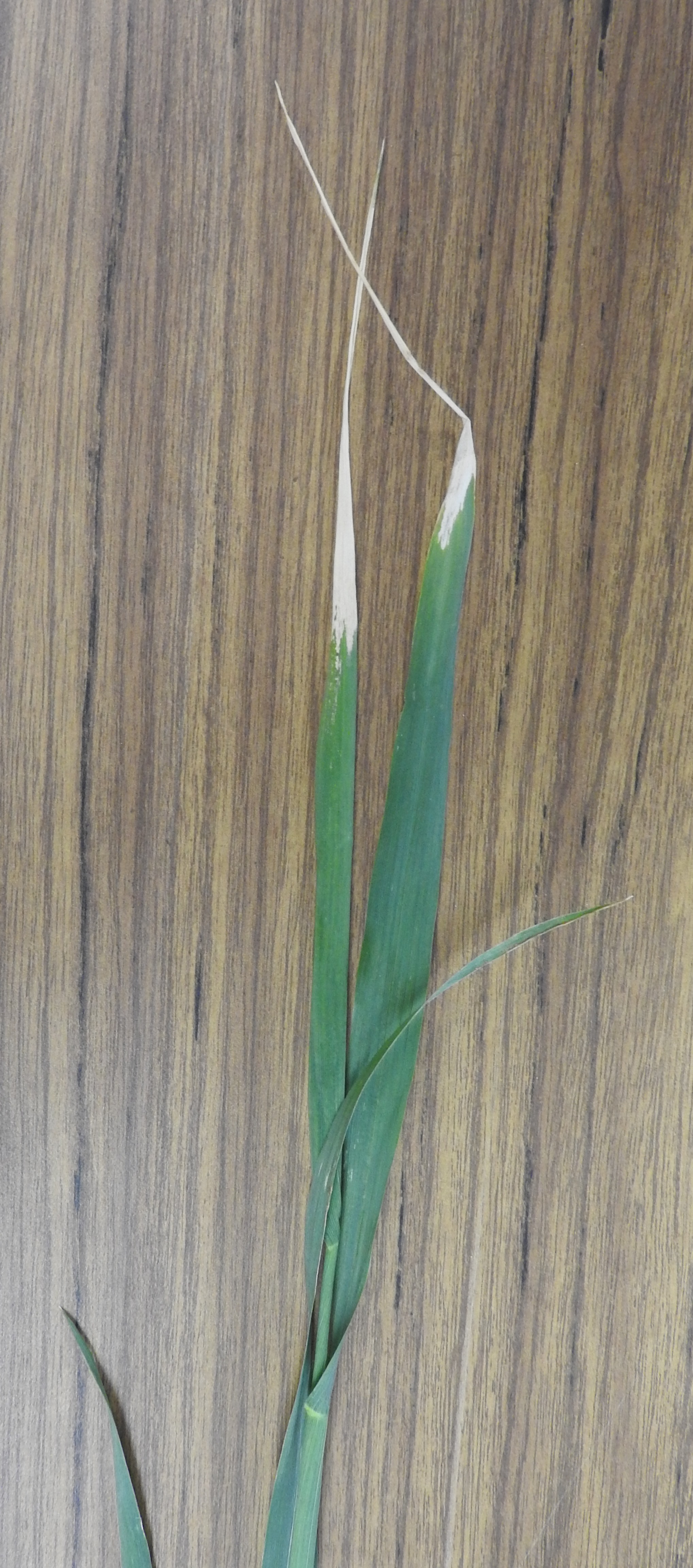
Figure 2. Leaf tip scorching (abiotic injury) in oats as a results of environmental conditions. (Image on left courtesy of Jason Voogt, Field 2 Field Agronomy)
Fungicide Season
Spring wheat and canola crops in south-central Manitoba are nearing or at the stage where a fungicide application is considered. The target pathogens are Fusarium graminearum in wheat and Sclerotinia sclerotiorum in canola, both of which are favoured by warm temperatures and moisture/high humidity. Conditions over the last week have not been conducive for infection. Even when considering previous moisture events it is important to scout fields individually as scattered thunderstorms result in variable moisture even over short distances. In addition to weather conditions, it is important to consider the microclimate. In thick, lush canopies morning dews tend to last longer and relative humidity stays high within a canopy leading to a higher probability of disease. In many areas of the province, plants were stressed early, are shorter overall, and rows have not filled in to create conducive disease conditions. Vigilant scouting is important for both crop staging as well as microclimatic conditions.
Insects in Canola
Flea beetle levels are dropping and in most fields plants have advanced to the point where they can tolerate the remaining feeding by flea beetles.
Cutworms are starting to pupate and become less of a concern.
So we are at a stage where the early-season insect concerns are coming to an end.
Some diamondback moth larvae and pupae have been found in fields near Portage la Prairie, but not at economic levels. In general diamondback moth have been low so far.
No significant levels of aster leafhopper have been reported yet.
Insects in Pulse Crops and Soybeans
As with canola the main early-season concern, in this case cutworms. is coming to an end. No reports of soybean aphid yet. It is usually into July before the first ones are seen in Manitoba, but good to start looking.
Insects in Forage Crops
One of the nice surprises this year is that alfalfa weevil levels do not appear to be as high as previous years. Some larvae are being found, but reports of high levels and heavy feeding are not common this year.
Insects in Cereal Crops
A few people have enquired about "yellow or orange flies" they are seeing in wheat, and other crops. These are lauxaniid flies (family Lauxaniidae). You will see them in many crops, as their larvae feed on decaying vegetable matter. They are of no harm to any crop, but can be quite numerous. The yellowish lauxaniid that is often in wheat, and that we hope people don't confuse with wheat midge, is Camptoprosopella borealis.
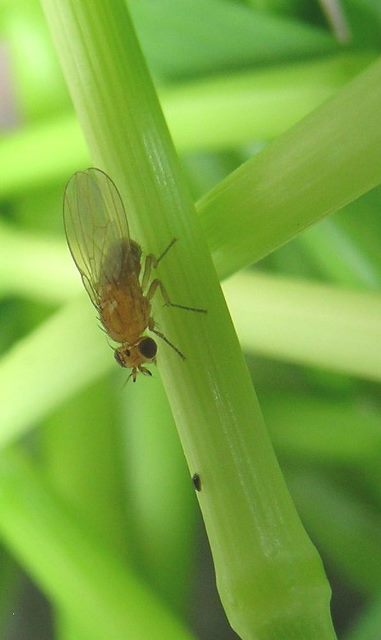
Figure 1. Lauxaniid Fly
Cereal Leaf Beetles Wanted
A project to monitor the biocontrol of cereal leaf beetles is currently ongoing. If you are seeing fields with cereal leaf beetle larvae, consider collecting a sample and sending it in to determine the level of parasitism. If you can not get a sample to send in please let me know. I’ll see if I can get or arrange for a sample to be collected and send it in. I’m hoping we can figure out if there are areas where levels of parasitism may be lower, so we can target these areas with releases of the parasitoid. So far our summer students have swept 3 cereal fields looking for cereal leaf beetle larvae (120 sweeps per field) and not found any. So maybe the parasitoids are doing their job well.
Collecting Instructions: Collect 20-30 larvae and put them with some cereal leaves and a moist paper towel in a hard container (e.g. plastic yogurt container) with holes poked in the lid for air. Pack the parcel with ice packs, label with your name, date, crop type, and location, and send them to:
Dr. Haley Catton, Agriculture and Agri-Food Canada, 5403 - 1 Ave S, Lethbridge, Alberta T1J 4B1
Phone (403-317-3404) for information on how to ship for free.
What's in it for you? Learn if cereal leaf beetle is being controlled by biocontrols in your field. If you need the parasitoid (Tetrastichus julis) released, we may be able provide you with some.
Phone (403-317-3404) for information on how to ship for free.
What's in it for you? Learn if cereal leaf beetle is being controlled by biocontrols in your field. If you need the parasitoid (Tetrastichus julis) released, we may be able provide you with some.
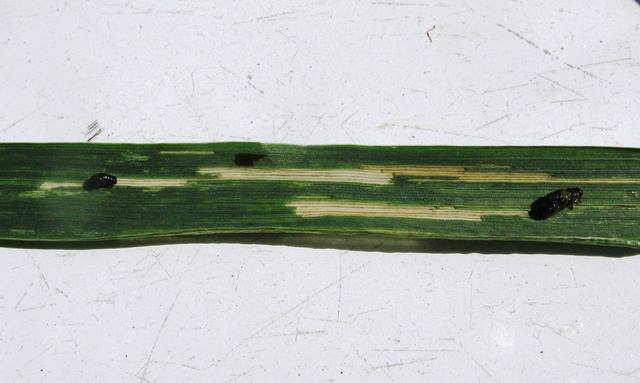
Figure 2. Cereal leaf beetle feeding and larvae.
Insect Monitoring Programs
Bertha Armyworm: Trap counts are low so far. The highest cumulative counts have been 21 in traps near Oak Bluff and Morris. Cumulative counts remain in the low risk category until they are above 300.
Diamondback Moth: Monitoring adults of diamondback moth with pheromone baited traps has been underway since the beginning of May. Highest counts have been in the Central region and Interlake, but overall levels are low. Table 1 summarizes the highest cumulative counts in Manitoba.
Table 1. Highest cumulative trap counts for diamondback moth adults over the trapping period April 29 to June 20, 2018.
| Location | Count |
|---|---|
| Oak Bluff | 103 |
| Morris | 80 |
| Winnipeg Beach | 78 |
| Warren | 77 |
| Teulon | 68 |
| Balmoral | 49 |
Larvae and pupae of diamondback moth have been observed in the Central Region, but not at economic levels.
A more detailed update of diamondback moth counts in Manitoba is available on the Manitoba Agriculture website at: http://www.gov.mb.ca/agriculture/crops/insects/diamondback-moth-forecast.html
Insect Identification Quiz
What could be causing the white patterns on the pea leaves in the photo below?

Photo by Laryssa Stevenson - Manitoba Pulse and Soybean Growers
Answer: These white patterns are created by a fly larva. There is a family of flies called leaf-miner flies (Agromyzidae) whose larva will make patterns like this in peas and many other crops.
They are of no economic concern to the pea crop, so no controls are needed.
----------------------------------------------------------------------------------------------------------------------
Compiled by:
John Gavloski, Entomologist Holly Derksen, Field Crop Pathologist
Manitoba Agriculture Manitoba Agriculture
Phone: (204) 750-0594 Phone: (204) 750-4248
To report observations on insects or plant pathogens that may be of interest or importance to farmers and agronomists in Manitoba, please send messages to the above contacts.
To be placed on an E-mail list so you will be notified immediately when new Manitoba Insect and Disease Updates are posted, please contact John Gavloski at the address or numbers listed above.
